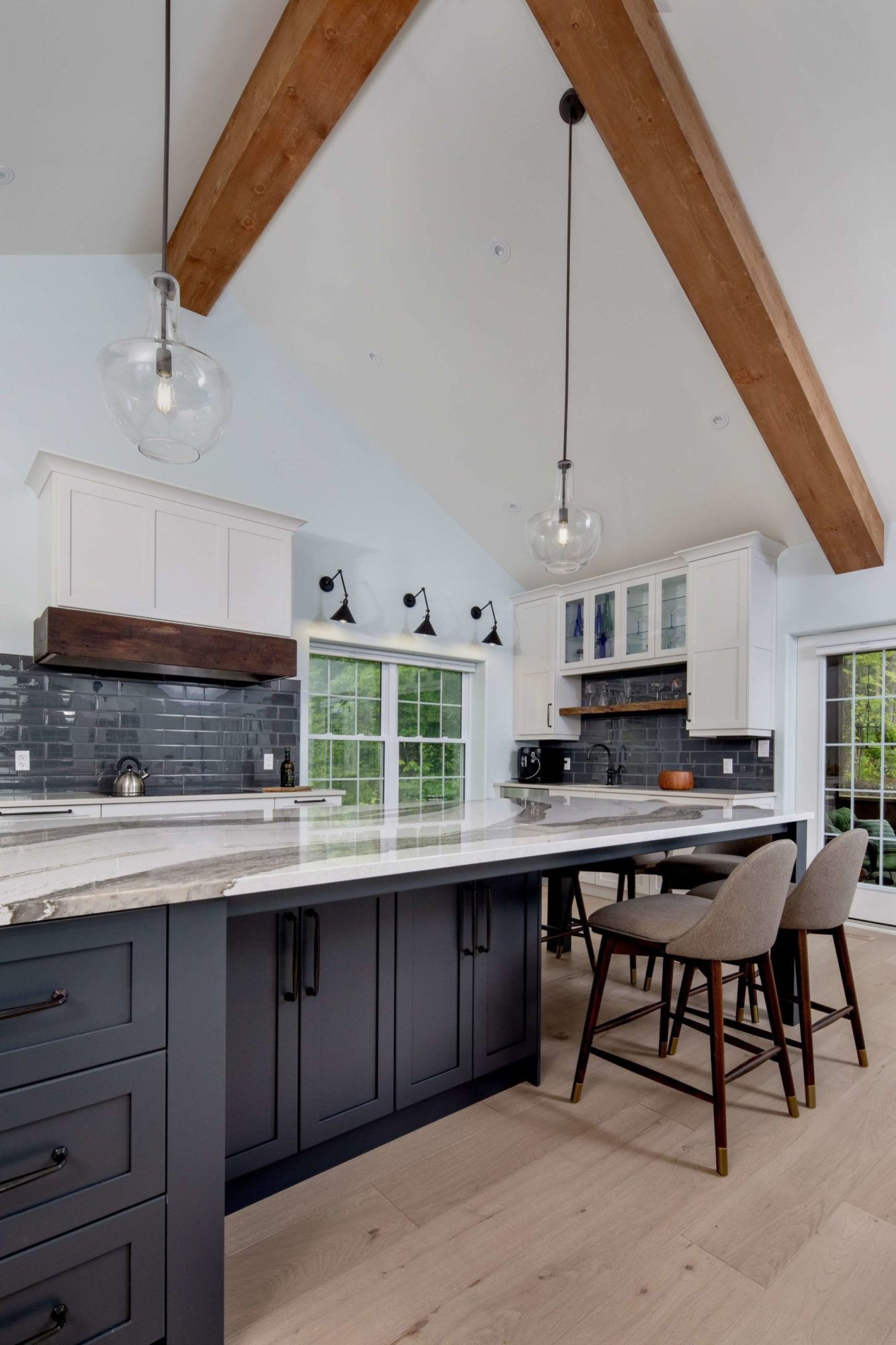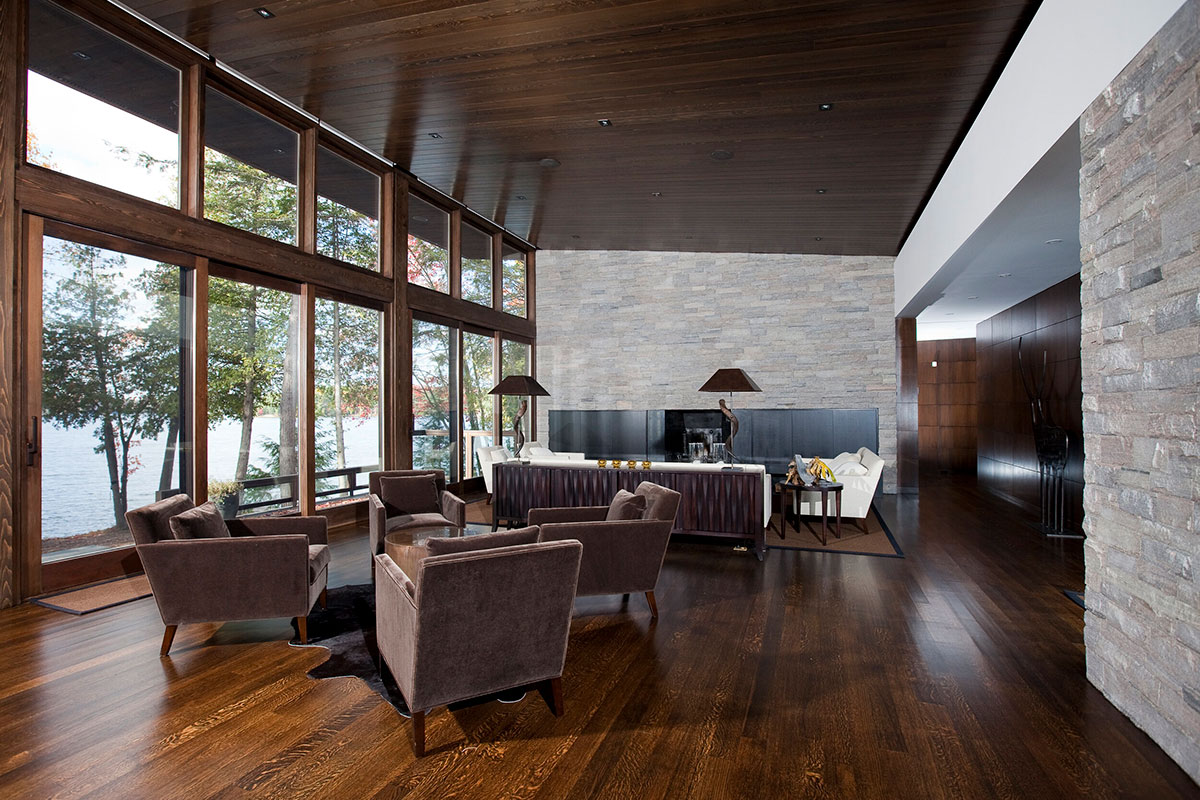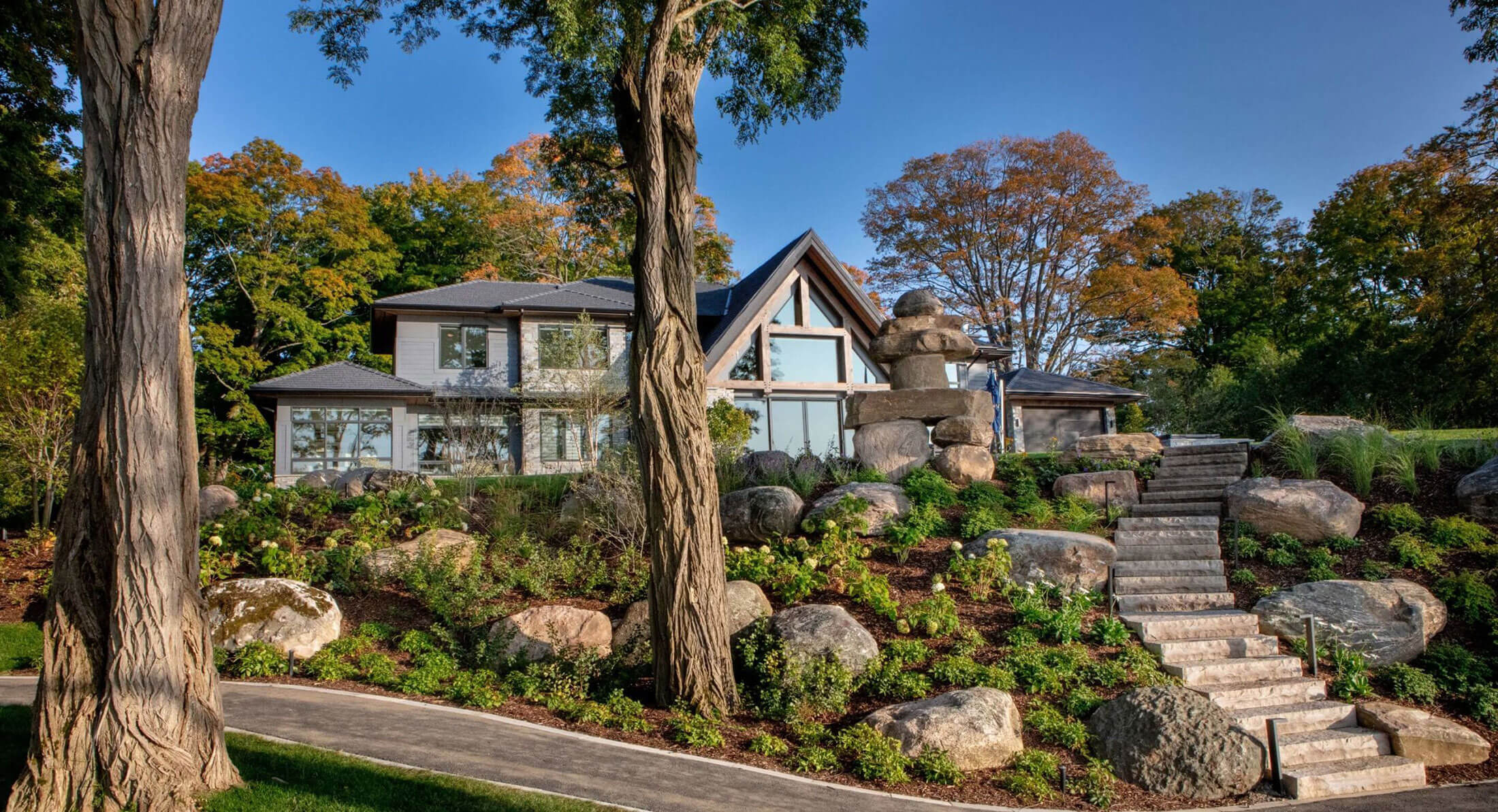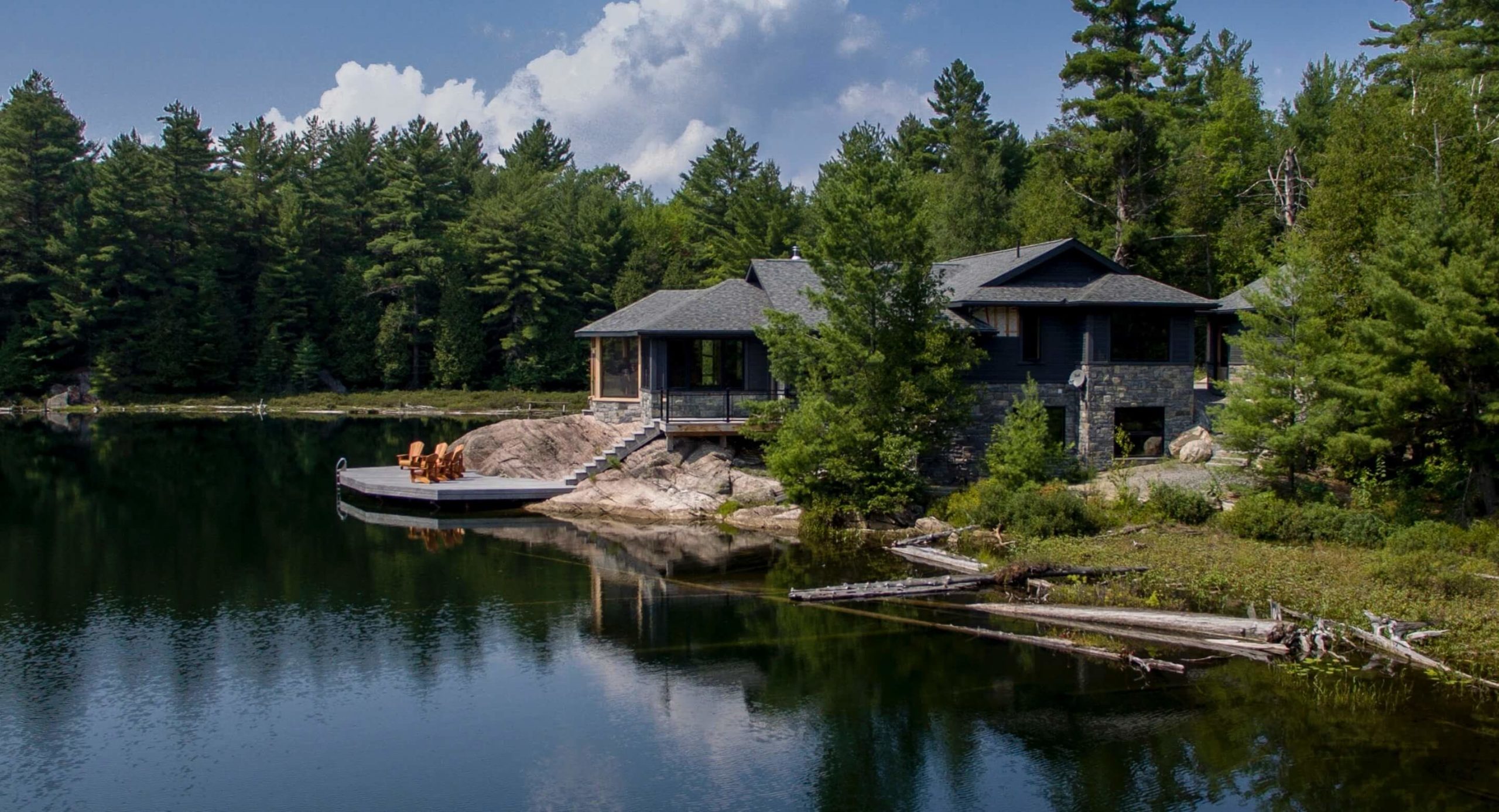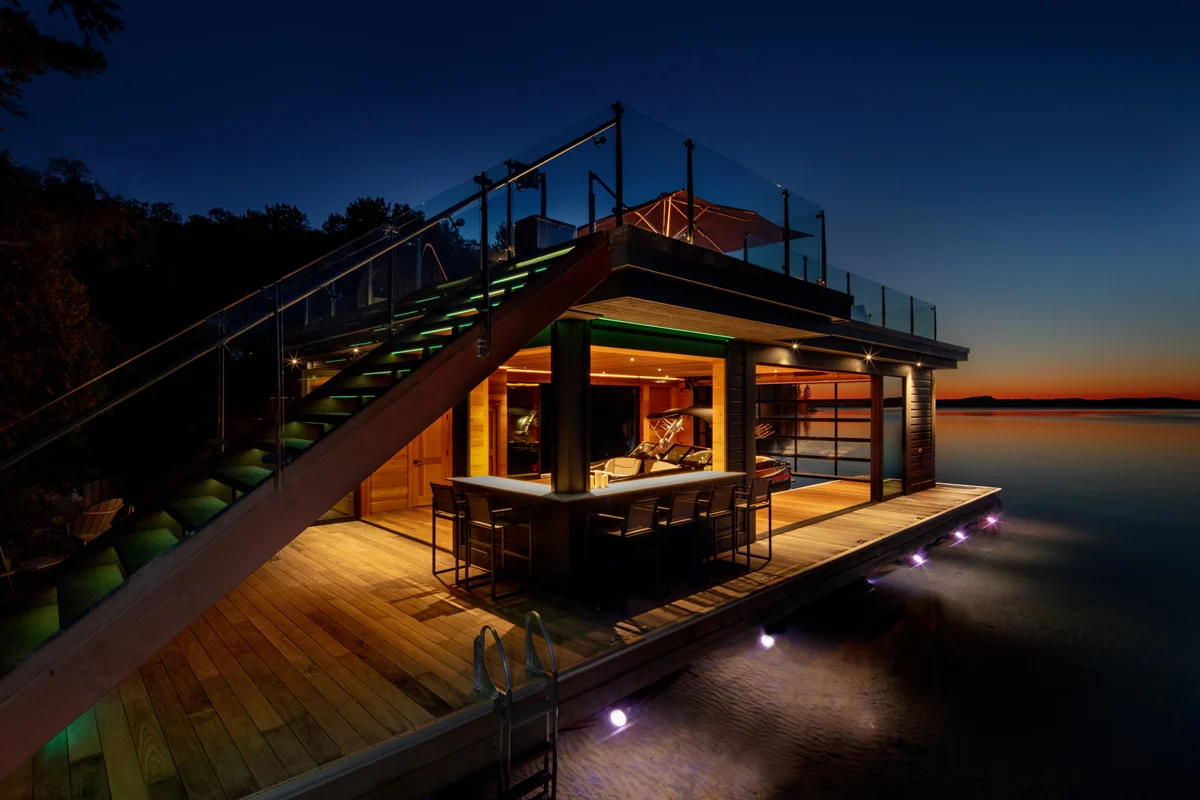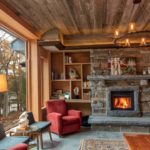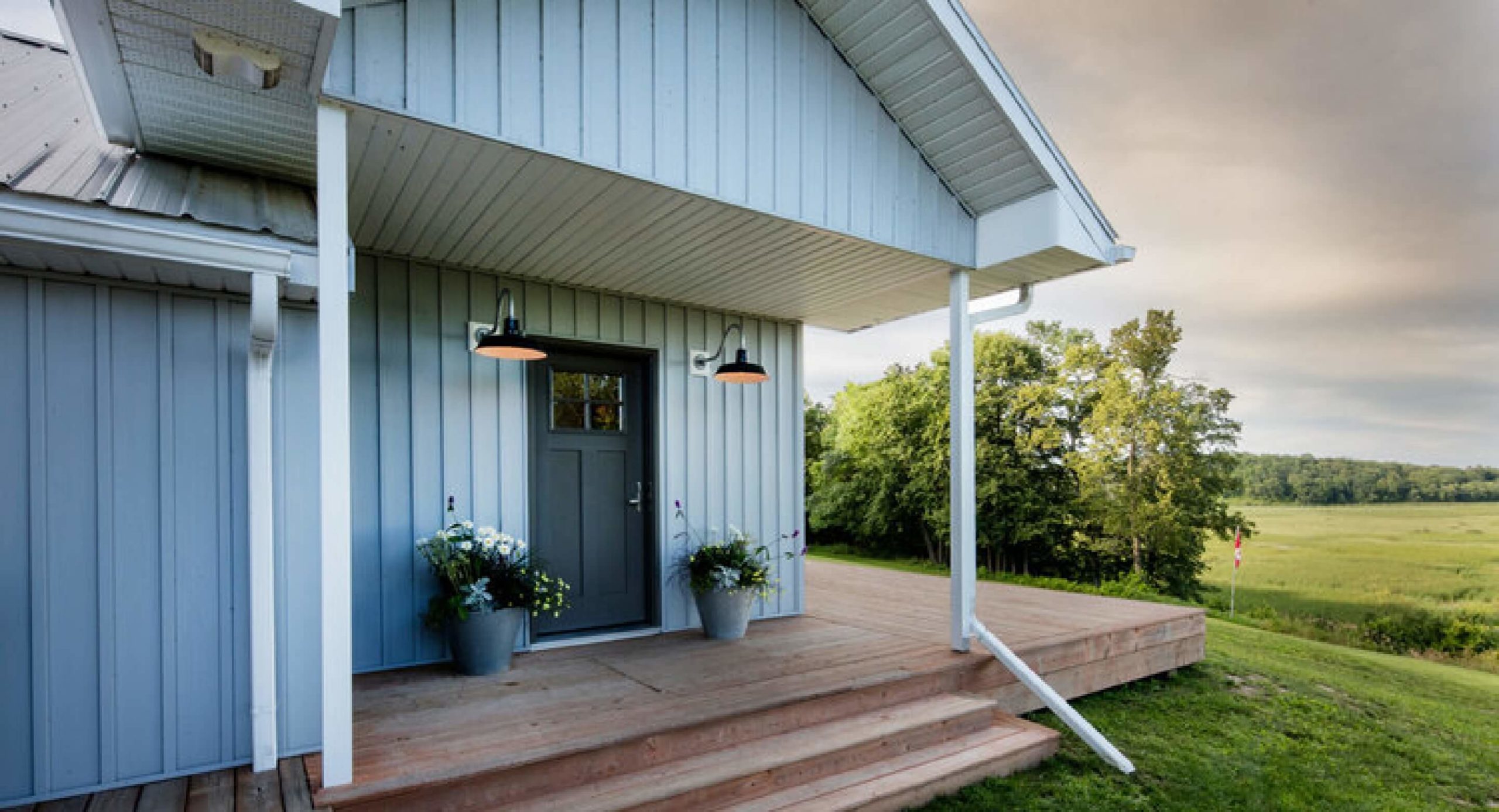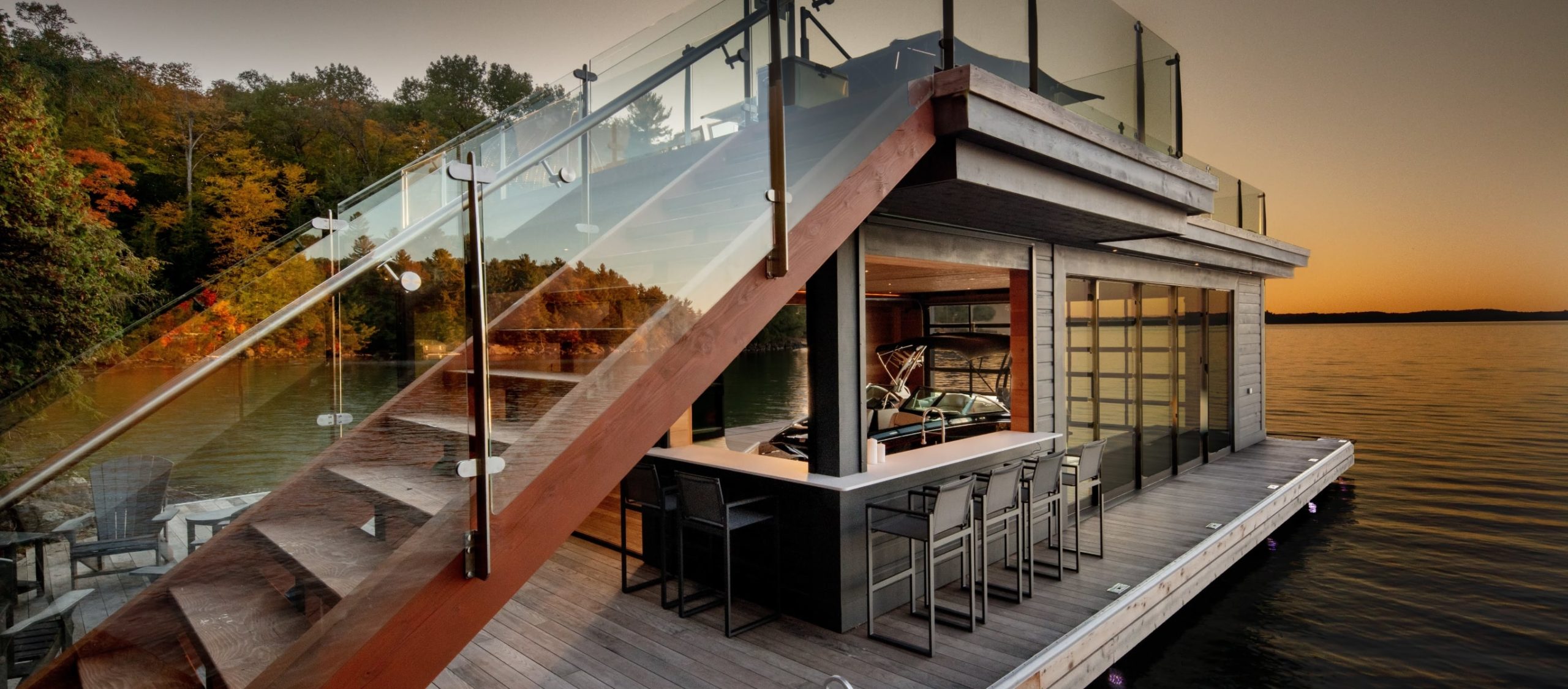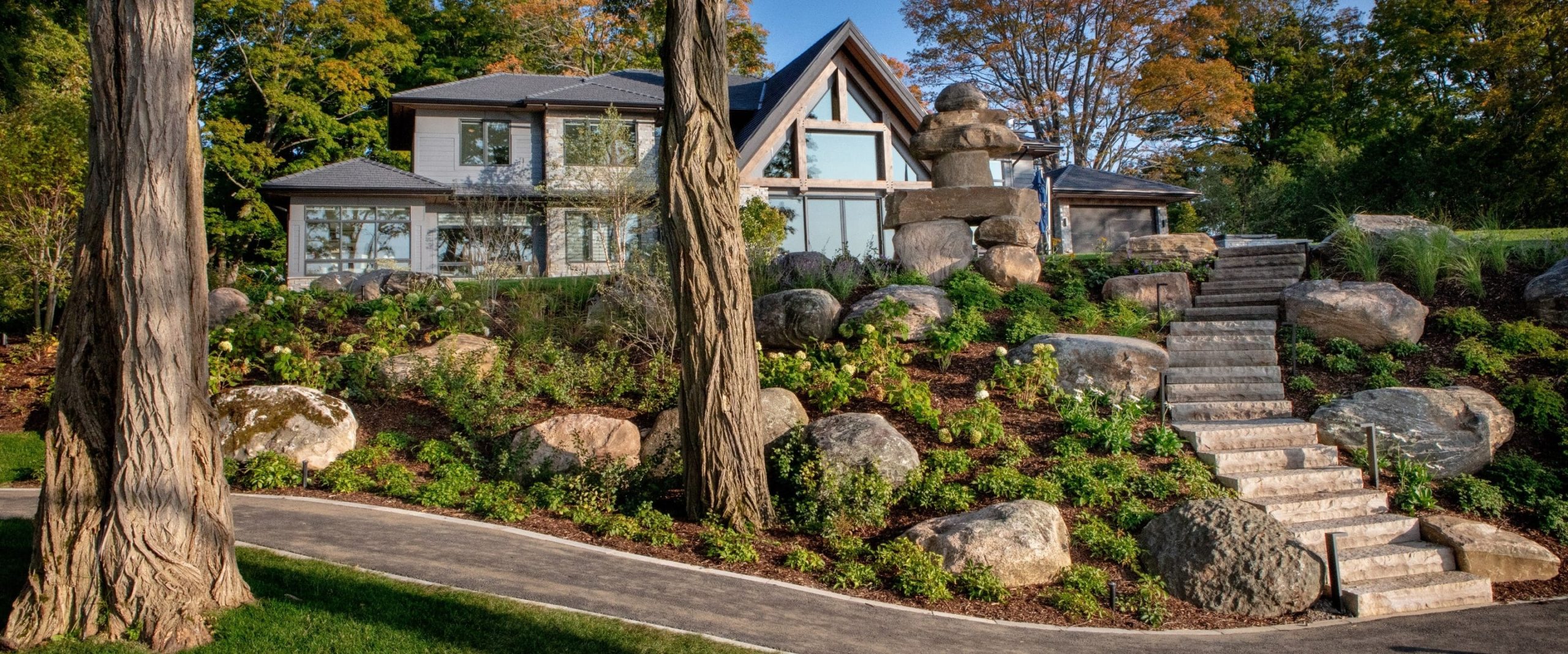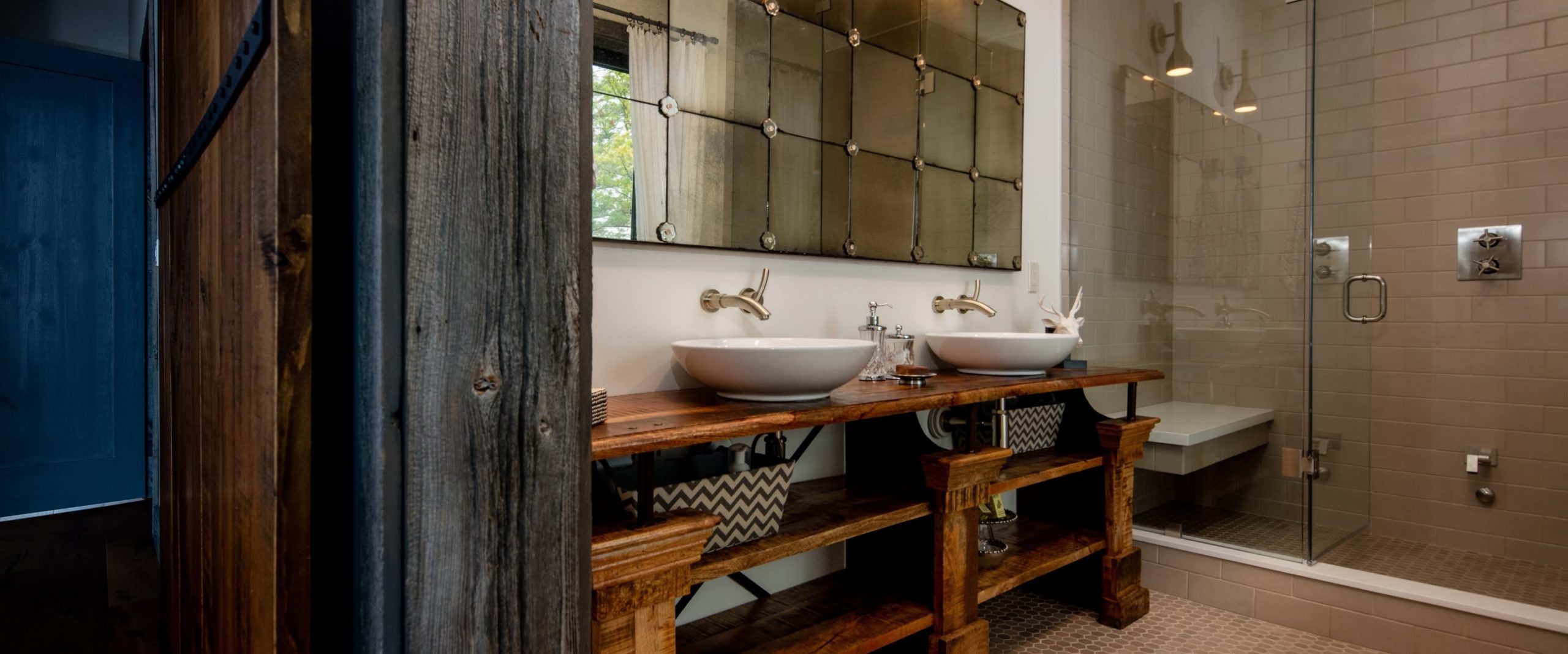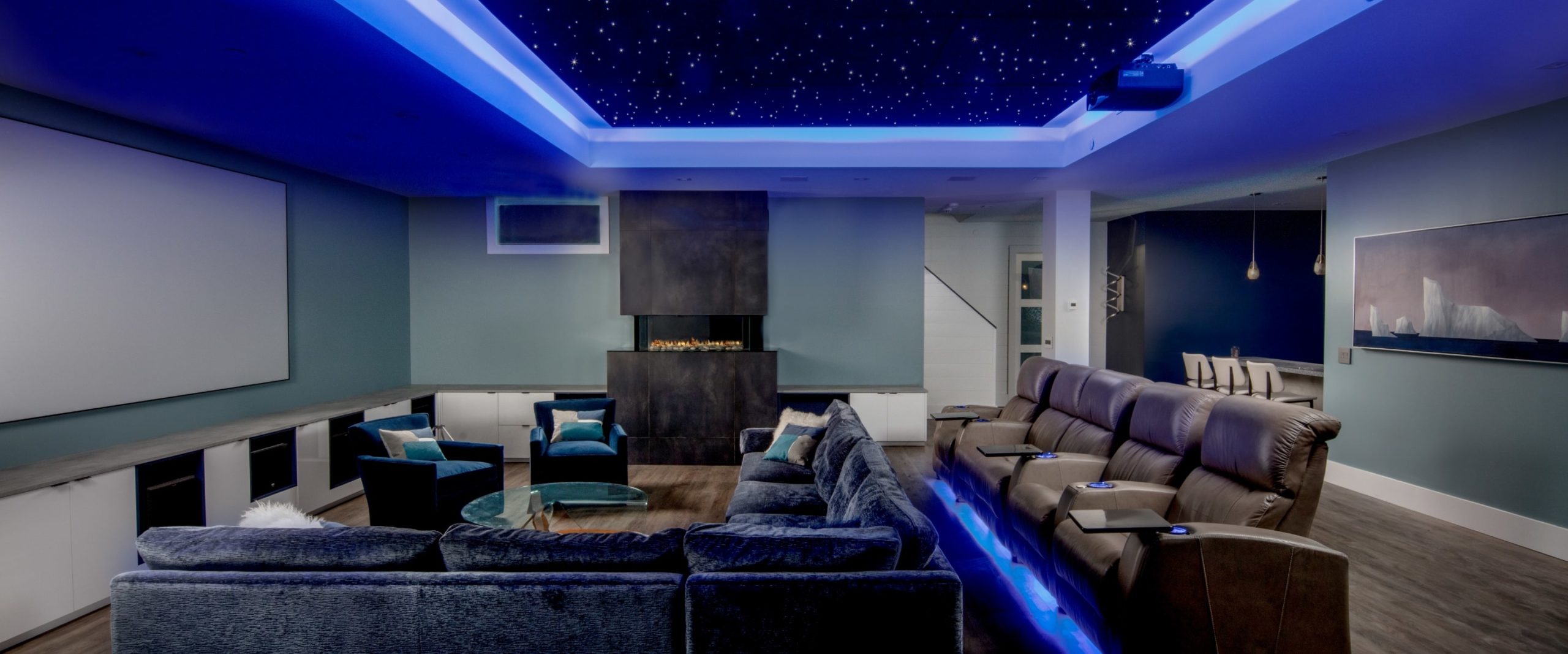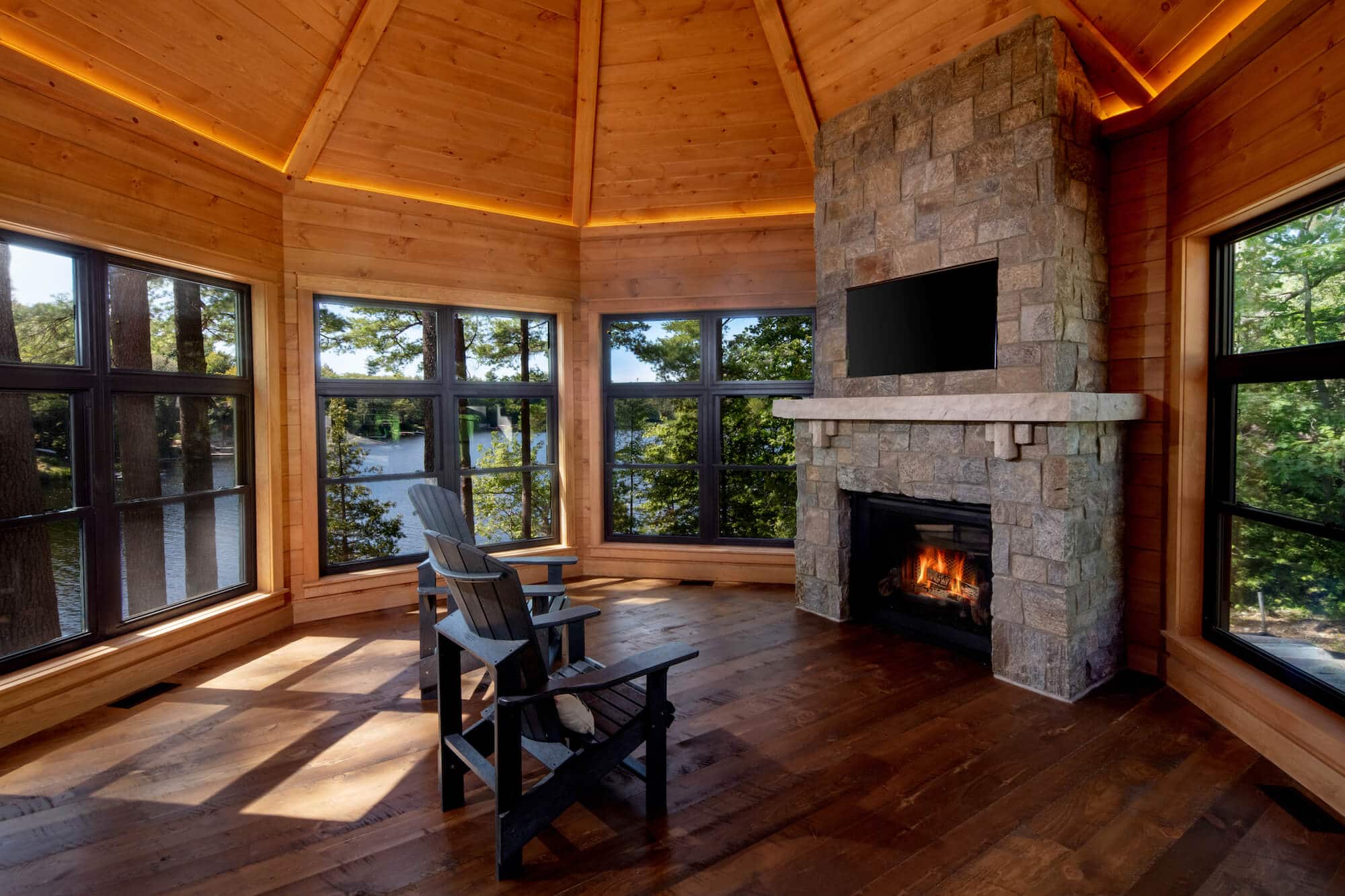The Ultimate Home Renovation Guide
The Ultimate Home Renovation Guide
Introduction
These days, home renovations are more than simply a weekend project, or a quick fix in order to make your home more marketable for resale.
In a study published by the Bank of Montreal, it’s clear budgets for home renovations are on the rise — totalling $48.4 billion in 2015.1 In fact, Canadians are spending more money on renovations that on new builds, which tell us that there’s an accelerated trend towards home owners wanting to invest in turning their current homes into their dream homes.
Renovations can be a significant investment with the potential for high impact in the short and long term — two reasons why it’s important to plan and execute at a professional level, know when to hire a contractor,
and avoid the pitfalls of inexperience.
Before you get started — that means before you even begin to look for contractor referrals, search the internet or local builders associations — you and your “team” need to form a united front. Your spouse, family members, and/or anyone living or investing in your home should communicate and align their goals for the project. This is an often over-looked, yet critical step before starting any home renovation project. This is because, any substantial renovation will take time and energy, and can quickly become a source of stress and emotional ups and downs for all involved.
For this very reason, it’s equally important to form a strong, trusting, mutually respectful relationship with your chosen contractor or design + build team — your RENOVATIONSHIP is the key to a successful process from start to finish.
The stakes are high. A renovation is a huge undertaking, but it doesn’t have to be a nightmare. This guide is meant to be practical, give you ideas and inspiration for your next project, and walk you through the process “ins and outs” of home renovation from the perspective of a professional.

Chapter 1: The entryway: A warm welcome
It seems apropos for this guide to start at the focal point of your home’s curb appeal: the entryway (both interior and exterior).
The term “curb appeal” crops up in magazines, TV shows and across the industry, and speaks to the fact that the first impression of what lies beyond the front door, starts from the street and sidewalk. Your personal style can be reflected in many ways once you get inside, that’s why most people focus indoors. But don’t underestimate the amount of character you can showcase on the exterior of your home and the impact it can have on you and your guests.
An exterior or entryway remodel fulfills a dual purpose of functionality and style — it’s important to determine the elements that best suit your lifestyle and vision for your home. Remember, remodeling is not just for the benefit of your guests; every home project needs to accomplish your family’s goal for its purpose, first and foremost.
Determine purpose with your lifestyle in mind
Before putting pen to blueprint, think about the following key considerations:
- How much parking you want to accommodate?
- Where do you need access points to the door and to the road?
- What are the best types of overhang to facilitate a comfortable entry for family and/or guests?
- Are you envisioning a utility mudroom, or a stylish foyer?
- Do you have the existing space, or will you need to create more space with an addition, or by knocking down walls?
- Do you need the space to accommodate storage for equipment and other family provisions?

Particularly if you are remodeling in an area that is remote, or experiences harsh weather conditions, these decisions are critical to make early on. These are great questions to start with because a warm welcome is just as much about day-to-day use as it is about flair.
Getting started: planning and preparation with a professional
A professional will prepare a budget, a timeline and all requirements for the project after determining your goals, needs, and the space available to use. In the design assessment period, your designer will take into account the answers to the questioned you’ve answered above and use them to conceptualize the best layout, materials, and style for your project.
Budget will be an important conversation in this phase. Typically, exterior remodeling will require a higher investment because the materials can be more expensive, and elements like landscaping will most likely come into play. Adding pitches to a roofline, or refacing your home’s exterior are high impact jobs aesthetically, but are also some of the most costly remodeling endeavours.
Adding personal touches: design focus
Once you’ve made functional decisions about exterior and interior entryways, you can start to incorporate your own personal style into the design elements. If you want a covered entryway, there are ways to create a stunning custom overhang roof. You can be creative with your materials, and shape. For example, you may prefer peaked roofs, or perhaps arched. You may want to source materials that reflect the interior style of your home — such as matching grains or stains of wood.
Look for opportunities to add splashes of colour from your front door to your garden. Landscaping is an important element that should work in harmony with your home design. Pathways lined with hedges, fruit trees, or rock gardens will add colour and texture throughout the year.
Design trends
1.Timberframe accents for overhangs, arches, or roof pitches are increasingly popular in entryway remodels.
2.An emerging trend in covered entryways is glass, creating coverage from the elements, yet still providing tons of natural light.
Pro-tip
Match your front door with the style of the home’s interior — there are so many options available from style (traditional, modern, cottage chic, urban contemporary) to colour. Bright red doors have become a popular choice, but think about your home’s palette; if you’ve decorated with cool, breezy colours, pick up those tones in your front door to create flow both indoors and out. Factory painted doors will last longer and are available in totally custom colours.
Whether you are coming home after a long day, or are welcoming guests into your home for the first time, you want to feel “at home” as soon you step through the front door. The aesthetic of the interior entryway establishes the rhythm and style of your home, and makes the all important first impression when you host guests.
Ceiling height is more important than most think it to be. Often times when remodeling, raising the ceiling height makes the biggest impact to the space. Cathedral ceilings are a popular choice for entryways, because it gives the feeling airy, open expanse — even in a space that is relatively small in square footage. If you can’t build out, build up! You can also incorporate your preference for shape, and style by designing with arches over peaks, or sourcing unique materials, installing crown moulding, and using colour.
Lighting is essential in any space, but perhaps even more so in spaces that don’t get as much natural lighting, or lack square footage. Light installations should compliment natural lighting. Where possible, try to mix the two — maximizing on best-light day or night. Skylights, sun tunnels, or windows on either side of your doorway are great ways to bring in natural light from various directions. If your doorway faces south, you’ll get fantastic light from dawn to dusk. However, if your doorway faces east or west it may be best to consider bringing light from above.
Storage space and flow are also important in a space that accommodates heavy traffic. Built-in closets and storage solutions will mitigate the fight for space to put on shoes, store jackets, and other daily routines.
Whether you are coming home after a long day, or are welcoming guests into your home for the first time, you want to feel “at home” as soon you step through the front door. The aesthetic of the interior entryway establishes the rhythm and style of your home, and makes the all important first impression when you host guests.
Consider where the eye lands, and design around the best features of your home. In an open concept layout, you can lead the eye around the entire floor space, or even directly back to a window with a view. Think about what your entryway looks like from the inside of your home; from where you’re seated in the living room, drawing room, or kitchen should be just as complimentary.
Summary: key take-aways and common pitfalls
- Consider function, purpose and style — all are equally important to achieve the goal of the project.
- Entryways rely on the aesthetic of the sightlines. Envision and plan for the viewpoints from every angle.
- Exterior renovations and landscaping are high investment, but high impact projects.
- Hiring a design + build contractor will mitigate the risk of costly overages and errors.
- Source materials wisely. Variables like climate, sun position, location and space will have an affect on your choices.
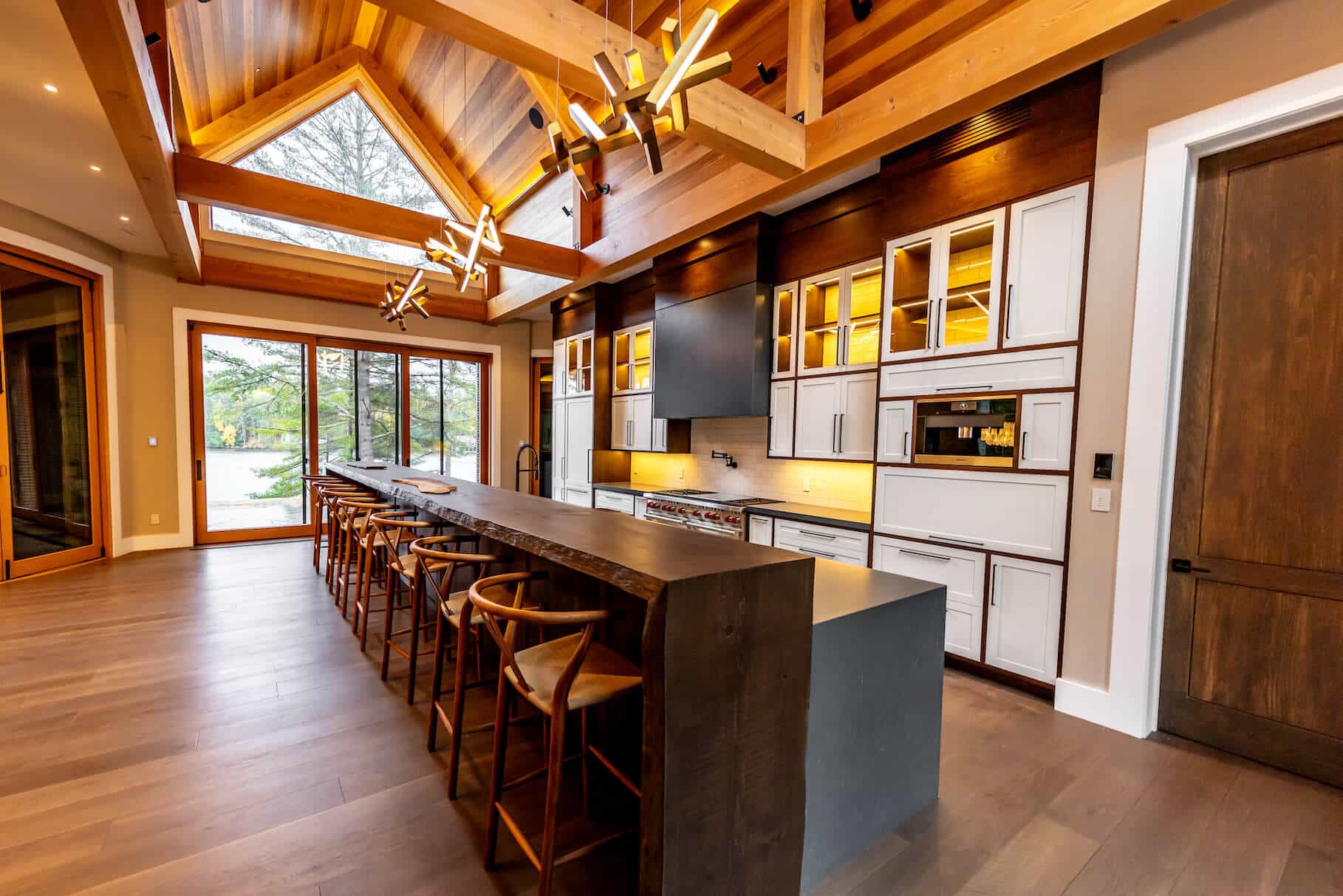
Chapter 2: The kitchen: Step into the heart of the home
The kitchen is often referred to as the “heart of the home”.
In many homes it becomes the gathering place for family and friends. It’s often the central hub of activity, and a room that gets a lot of attention, particularly when remodelling projects are on the table.
Choosing a contractor for such an important space in your home should not be taken lightly. In most cases, “remodelling-projects-gone-wrong” can be avoided by careful decision making before handing over the job to just anyone. Look at portfolios,
ask for recommendations, and check up on professional designations and accreditations.
Getting started: planning and preparation with a professional
More time is spent in the planning phase of a kitchen remodel compared to any other room in the home. That’s because the project involves a lot of complex working parts, such as plumbing, electrical, hydro, design, construction, material sourcing, tradespeople, etc. Therefore, it warrants the highest investment from a budget standpoint during the planning phase. Taking the right amount of time to plan and hiring the right kind of expertise will save you the cost of making up for mistakes down the road.
The planning phase should be a collabo-rative effort between the designer, the builder and your family. This is where a strong Renovationship is critical to the success of the entire project.

Pro tips
1. On average, a full kitchen remodel requires 40–50 professional hours spent on planning and design. A good rule of thumb is to set aside 5% of your total project budget to pay for the planning and design hours.
2. Be careful not to believe everything you see on television home reno programs. These shows are primarily meant to be entertaining. While they often provide decent educational content, they do not provide a completely accurate breakdown
of costs. Most programs exclude the value of the products that are donated, that includes labour in some cases. With that in mind, take the budget breakdowns on television with a grain of salt.
Adding personal touches: design focus
Sourcing ideas for a remodel or brand new kitchen design can become over-whelming; when you go looking, you’ll find what seems like a million resources, trends, and opinions. Here are a few considerations you should take
into account before starting a kitchen remodel or design.
Materials matter — particularly in a space that accommodates a lot of foot traffic, and food preparation on a daily basis. Choose materials with your lifestyle, and personal sense of style and decor, in mind.
Surface materials, as used on countertops, will take up quite a bit of real estate in your kitchen and therefore call for some visual impact. But they are also the surface that will take the most “beating” as a working space for food preparation, so durability and versatility are critical.
Design trend
Countertop trends range from laminate, butcher block, to cement, and stainless steel to the ever-popular granite or marble — each with their own set of pros and cons. Longevity is an important factor in any large remodelling project — be careful not to choose a passing fad, or a material that might date itself in a few years.
Cabinet doors require the same consideration, and there are just as many options for materials. MDF, veneer, solid wood, metals, glass. By far the most popular choice is a solid wood, veneer, or product that replicates the look and style of wood. But that hardly narrows the choices. When choosing this direction, there are three factors:
Grain
Each type of wood will have a different grain, and therefore, is akin to choosing a piece of artwork for your walls. No two grains are the same. Typically, Oaks have pronounced grain patterns, while Maples have a more muted, or softer grain. Carefully consider your preference, and the overall look you desire to achieve in the space.
Colour
While choosing the colour of your wood is important, it’s common for the natural colour used for cabinetry to be stained a range of tones and hues. It’s even possible to replicate the colour of another wood using a stain or finish (Birch to Maple, for example). If you want an au natural finish, then pay attention to the colour of the wood and grain and how it will fit in with the other colours and textures in the space.
Construction
The construction of cabinet drawers and doors will determine durability, but will also play into the overall visual impact and cost. An example of this, are the many types of hinges available that combine form and function.
A popular trend in kitchen cabinet design is soft close hinges that virtually eliminate the sound of slamming doors and drawers.
Complement with colour
Just as in any room in your house, colour in the kitchen will instantly define the atmosphere and its style within your home. Trends are showing that paint is not the only way to infuse touches of colour into the space. Other materials like wallpapers, metallics, mixed materials (wood and stone, for example) or even tiles and ceramics are becoming more and more popular in kitchen design.
Design trend
Leatrice Eiseman, executive director of The Pantone Color Institute says that in a room that’s used most often as a gathering place for friends and family, colours should exude the same energy. Don’t be afraid to mix colours, materials, and textures to create the personality of your family and home. A professional designer will create a concept board (digital or physical) that brings together all of the colours, materials and textures you’ve chosen. The sum of the parts should be complementary.
Summary: key take-aways and common pitfalls
- Style/design decisions should be made with function and your lifestyle at the fore.
- The kitchen is the “heart”, the hub, and the largest traffic area in the home. Be sure
that design fits the purpose of the space. - Set aside at least 5% of your total budget for the planning phase of any kitchen
renovation. - With so many critical working parts in a kitchen remodel, there’s no room for error. Professional help is recommended.
- Don’t be afraid to mix materials to add texture and interest, or be bold with your
colour palette.
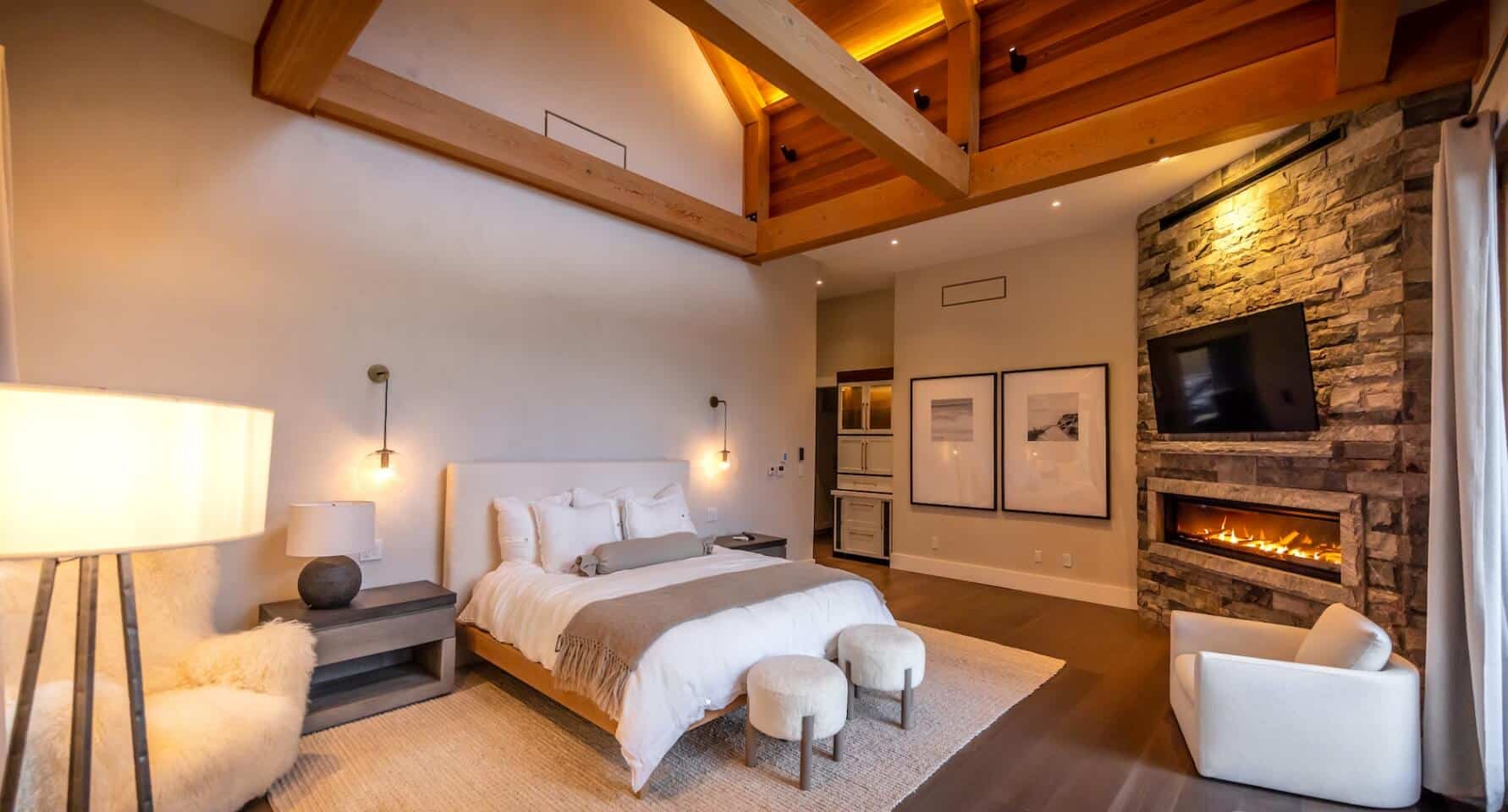
Chapter 3: The master bedroom suite: An escape to recharge
Bedroom
Be clear about your goals (both aesthetic and functional) — why are you changing the space in the first place? Your remodel should be designed to achieve those goals.
Do you need more square footage? Are you tired of the room colour and style? Are you entering a new phase in your life where the function or layout of the space needs to alter?
There are a number of functional elements and preferences that will greatly affect design, consider the following when you speak with a professional designer:
- Size of the space and layout (are you knocking down walls?Adding more space? What are you working with?)
- Windows (which direction they face, do they need replacing, are you adding any new or upgrading your windows?)
- Lifestyle, and purpose for the space (TV, fireplace, phone/desk or seating area)
There are three common components of a master suite remodel:
- The bedroom
- The ensuite bathroom
- The walk-in closet
In all cases, defining the goal of each project will determine the finer details, like budget, timeline, and design.

Design trend
Choose lighter wall colours for smaller rooms to reflect the light and give the illusion of more space.
Ensuite Bathroom
Bathroom remodelling projects can range from minimal enhancements to extreme overhauls.
In any case, the bathroom has very different considerations than other rooms in the home. It has the most amount
of plumbing, it’s the room where the most moisture can occur, and it’s often where the most damage can happen if mistakes are made.
Always remember that any and all materials chosen for the bathroom should be carefully selected to resist moisture. That includes wall and ceiling paint, tiles, wood, flooring etc. Many products will state clearly whether they can be used in bathrooms. Some materials are simply not bathroom-appropriate. For example, some types of wood absorb moisture that can lead to cracking, or worse, mould and mildew. At all costs, avoid leaks, seepage, rust and mould — not only will you risk costly damage to your home, you’ll put your general well being at risk.
Just as you would in any other room, try to strike the right balance between artificial and natural light.
Many bathrooms do not have windows, so skylights or sun tunnels are excellent solutions to this common problem. But perhaps more than in any other room in the house, the selection and placement of artificial lighting is crucial. A bathroom suite, or bathroom that is common space accessed by multiple bedrooms, are typically where people get ready throughout the day.
Finally, if you are planning to change the layout of your bathroom, the investment can be high, but the payoff is just as big. Reconfiguring where the most important pieces sit in a space (in this case, toilet, sink, bath) requires more effort and expertise, but has the potential to completely reinvent the room. If you don’t want to go as far as knocking down walls, re-plumbing, or adding additional space, there are some spatial and design tricks to give the illusion of space.
Pro tip
The right lighting is a necessity. Over the counter, beside or close to mirrors and sinks are commonly where the most light is needed. It’s also important to source and select lighting that isn’t too harsh or too soft — try to replicate as close to natural as possible.
Design trend
Using mirrors, glass, or open shelves will make the room look more spacious, open and even brighter.
Walk in closet
Design Focus
Space + organization are the two most critical considerations when starting the design and remodel of a walk in closet. It’s important to note that contrary to what you might see on TV, in magazines or on the big screen, closets are not just built for style; organization is key to making the closet fit your lifestyle. Here are a few ways to maximize your space, and keep your closet functional.
It’s very important to think about the amount of space you have to hang clothing — there has to be room for the hangers themselves, and enough height to hang long and short items. There are pretty specific parameters around how much shelf space you can fit into closet designs to account for corners, hanger widths, etc. To mitigate this, try doubling up the hanging racks for shorter items, thereby doubling the space available for clothes.
If your space and budget can afford it, a huge trend in closets is a centre island, or a seating area. An island will give you extra storage, and a tabletop for accessories, a make-up mirror, or a stag-ing area for choosing the perfect outfit! A seating area, like a bench, daybed, or chaise lounge, is both a stylish state-ment and a practical element because it will provide you with a place to sit while putting on socks, shoes, etc.
Pro tip
Reserve the top shelves for storage of out of season clothing. You can add pops of colour and integrate your own style by putting these items into colourful baskets or zippered clothing storage cubes.
Design trend
There are lots of innovative accessories that can help you get organized. Find stylish shoe and tie racks, belt hangers, pant hangers, varying heights and shapes of shelves — your options are endless
In any small space (and particularly in closets where windows are not commonly part of the original plan) it’s important
to find ways to bring in light and a feeling of openness. Your designer might consider building a window into the design,
or funnel light through the roof using a skylight or a Velux Sun Tunnel. Mirrors are another great (and comparatively budget- friendly) way to reflect light from natural and other light sources.
Design trend
Recently, there has been a rise in the trend of building custom drawer bank units, dedicated shoe shelves, and open shelving. It’s much easier to select clothing and accessories from open shelves, rather than digging through a closed drawer.
Summary: key take-aways and common pitfalls
- Materials chosen for the bathroom should be carefully
selected to resist moisture. - Space is at a premium — find ways to maximize every inch
with light and layout.
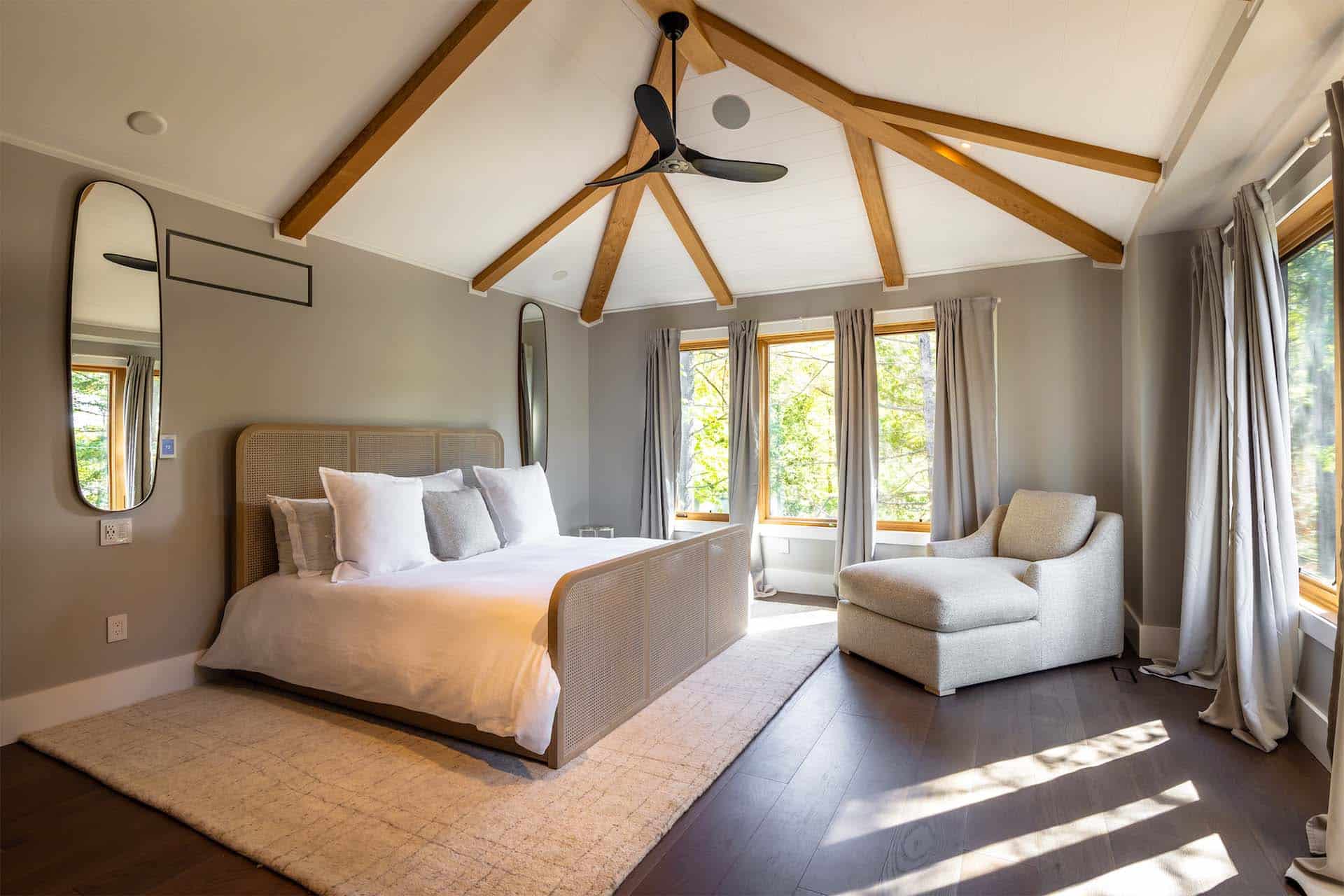
Chapter 4: Room additions: More space to live in
Full room additions help with space issues in your home, without having to move somewhere larger.
More and more people are turning to renovations, like additions, to extend the years they live in one place. But additions can be costly, and complex projects to undertake because of how many working parts are involved. The reality is that an addition involves the same components of a brand new build, everything from foundations, plumbing, electricity, heating, flooring, and windows, etc.
Determine purpose with your lifestyle in mind
Your first questions should be, “Why do you need the extra space, and what issues are you trying to solve with this addition”? Your answers to these questions upfront will determine the type of room that needs to be built, the budget considerations, and the design and construction elements of the space.
Getting started: planning and preparation with a professional
Your first questions should be, “Why do you need the extra space, and what issues are you trying to solve with this addition”? Your answers to these questions upfront will determine the type of room that needs to be built, the budget considerations, and the design and construction elements of the space.
Pro tip
Remember that all additions will require remodelling at the place where the new addition joins the existing home.
Design Assessment
During a design assessment period, many questions about plumbing, electric and heating will be answered during site visits in order to minimize any surprises down the road. For the homeowner, it’s worth the extra money to pay for a comprehensive budget development and design.
Adding personal touches: design focus
Perhaps the most important design decisions will be determining how to blend the existing home style with the elevation and exterior design of the addition — this includes exterior finish materials and landscaping. Think about both the interior and exterior — don’t ruin the curb appeal, enhance it.
Interior design decisions depend on whether you want to seamlessly blend the new with the existing design elements and personality in your home, or whether you’d prefer a fresh, totally different look for the space. A designer will gather influences and inspirations from photos you have collected in magazines, online, or previous work.
Pro tip
The designer should visit your home in person to get a feel for the space, its use, and your personal style.
Design Assessment
Function always influences design and materials. Designers will choose flooring, countertops, walls and surfaces, based on your lifestyle. For example, if you have a dog with claws, hardwood floors may not be the best option.
Summary: key take-aways and common pitfalls
- Your plan for use, and goals for the space will largely determine the budget you’ll need. Remember, there are a lot of critical factors so be very clear about your budget from day one.
- The planning phase with a professional will be an all-important step and investment. Your designer and builder will assess municipal restrictions and make educated decisions based on functionality and style of the room.
- Make a decision about blending your existing and your new spaces.
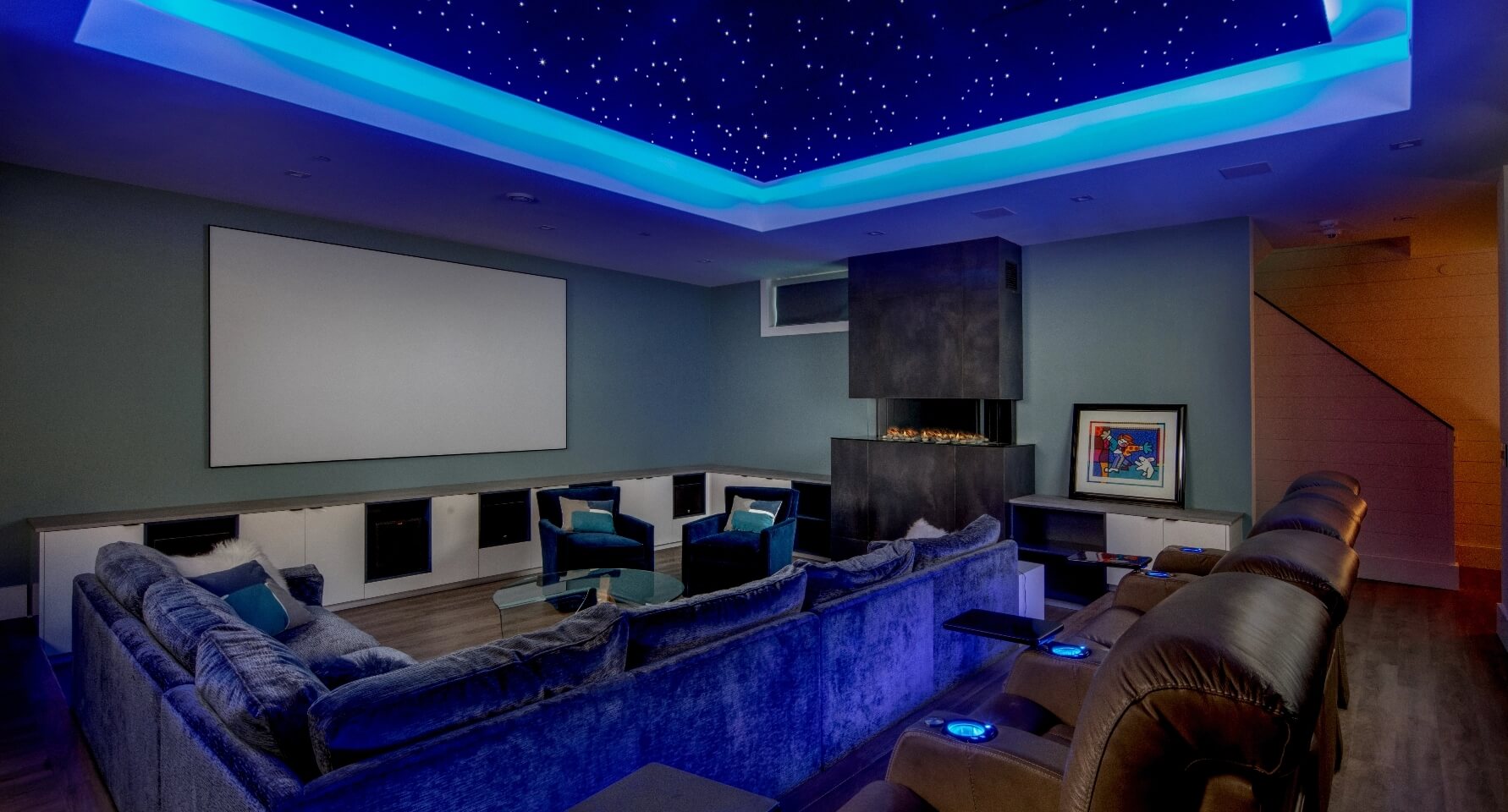
Chapter 5: The basement: Not just a place for storage
The investment in cost and time can quickly escalate if simple yet critical factors are overlooked. Basement remodels can be large or small, but will immediately increase your enjoyment of the space within your home — floor space you already have, but perhaps isn’t being used to its full potential. However, typically a basement is fully or partially under-ground which means it should be treated differently than other space in your house when planning a remodel.

Pro Tip
Winter is traditionally the peak season for basement remodelling projects. Many people turn their sights indoors, and invest in a project that extends their comfortable, even recreational, living space.
Determine purpose with your lifestyle in mind
It’s common for basements to be fairly open concept, unless there was a previous renovation where walls were built. In any case, layout is important to plan in the early stages of design and construction. Again, your lifestyle and purpose for use will be the greatest determining factors for layout design. Ask yourself, do you want to separate the space into rooms (i.e. an extra bedroom, a gym/workout area, hobby spaces, etc.), or to keep it open concept?
Your preferences will impact the entire remodel from materials to build and budget considerations. Remember, adding walls will affect the circulation of heat and light. Your lifestyle and purpose for the remodel will be the determining factor when it comes to choosing a layout.
Getting started: planning and preparation with a professional
In an underground setting, proper material selection is a critically important component — a contractor with experience on basements specifically is recommended. Basements are traditionally drafty and damp spaces — flooring and wall/ceiling materials need to be sourced and installed with that in mind. You’ll need to plan to combat the cold ground temperatures and moisture with ample insulation in the walls, ceiling and, in particular, floors. Keeping the heat in and the cold out, will also help with energy costs. Consider durability factors first and foremost, some materials, although aesthetically pleasing, aren’t always appropriate for a basement (i.e. certain types of flooring, woods, paint, etc.)
The level of your basement matters greatly when you consider insulation and temperature control. Many basements are walk-out style (level with the ground outside), but still need to be properly insulated to keep the area the same temperature as the rest of the house. It’s more common for basements to be partially, or fully underground. In these cases, it’s even more important to insulate walls, ceiling and especially floors to keep the ground temperature and moisture out of the space. If you have a new home, the 2012 Building Code will have ensured that you already have floor insulation under your basement concrete.
Proper heat distribution and insulation are major contributing factors to energy consumption, household utility savings and comfort. That’s why it’s important not to take any short-cuts in the planning phase because any errors will end up costing you down the road.
Adding personal touches: design focus
By far the most important element in a basement design is lighting. Most basements are partially or fully submerged below ground level which makes it difficult to bring in substantial natural lighting. A dark basement can quickly feel cold and uninviting.
That’s why it’s so important to strike a balance between artificial and natural lighting solutions in this space in particular. Find ways to allow sunlight to enter, this might require opening up the layout of the entire space. Another solution is to maximize the amount of light from even half-sized windows by installing window wells to funnel in extra natural lighting. Artificial lighting sources will work to balance any brightness deficiencies — particularly during darker periods of the day.
Pro tip
Plan for extra artificial lighting in spaces where your windows or natural light sources face east or west — the sun will only filter in at certain times throughout the day.
Summary: key take-aways and common pitfalls
- Achieve the proper amount of lighting with a balance of natural and artificial lighting solutions.
- Achieve your goals for the space by determining layout with a professional designer early.
- Using the right materials for walls and flooring will not only keep the heat in and the cold out, but conserve energy.
We are the choice for clientele seeking to build stunning lifestyle spaces.
Gilbert + Burke is an industry leading design-build firm known for award-winning design, custom home and cottage construction, and extensive remodels in the Muskoka, Kawartha, and GTA regions. We create stunning, unique homes and cottages that are environmentally responsible, healthy, and energy smart.
Experts at putting relationships first—we are The RenovationshipTM Experts.
Clients trust Gilbert + Burke to make space for their dreams, and we take that honour very seriously
VALUE + QUALITY
With our award-winning team of crafts-men and artisans, we ensure an attention to detail and finish that is second-to-none. We keep your investment safe and looking stunning.
BUDGET + TIMELINES
We are not your typical builder. We complete all of our projects on time and on budget. Always. It’s a point of pride with Gilbert + Burke. We work with our clients to set the vision of the project, detail the budget, lay out the schedule, and execute their dream reno flawlessly.
MESS + HASSLE
No hassles. No headaches. No surprises. No regrets. That is our promise. With daily project communication and site clean-up, we make sure our clients know exactly what’s happening with their project and can live in their home while we work.
EXPERIENCE + EXPERTISE
We are an award-winning team of experienced design-build professionals. We have over 50 years of combined management experience and an innate understanding of how to find the real dream — the “why”— in every project we have the privilege of working on.



